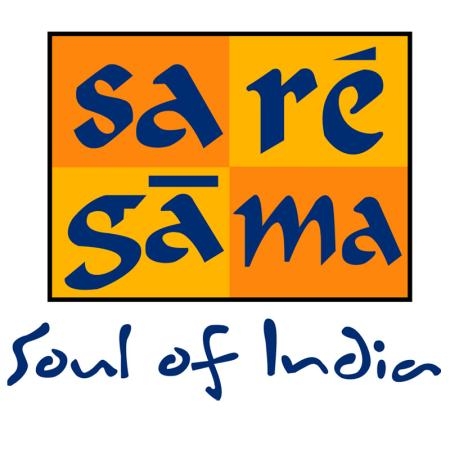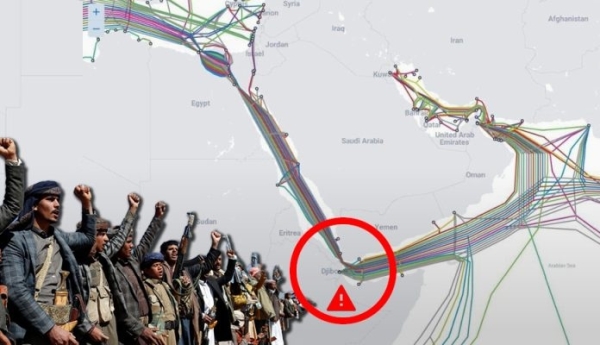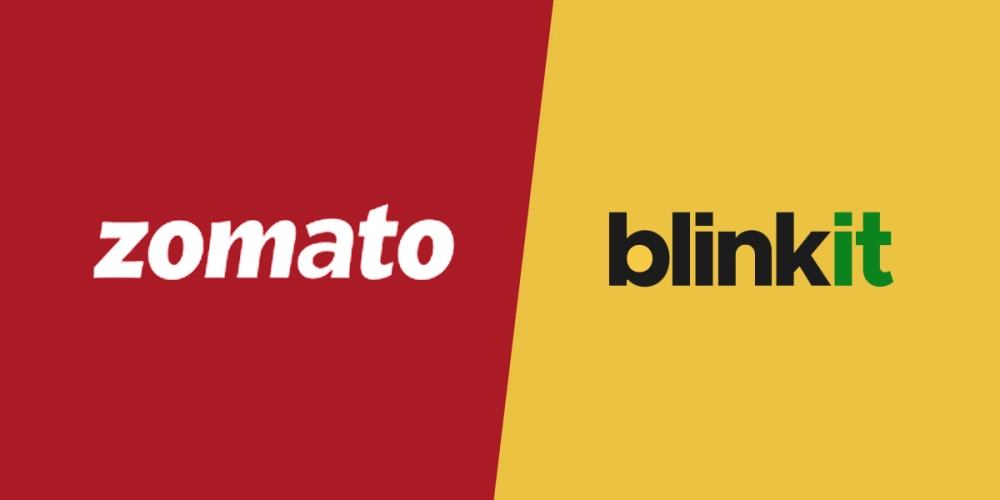क्या आपने स्मॉल-कैप स्टॉक में भारी निवेश किया है? तो एक वोलैटिलिटी ट्रेडर की तरह सोचना सीखें: स्मॉल-कैप स्टॉक अत्यधिक अस्थिर होते हैं। इसलिए, यदि आप उनमें ट्रेडिंग कर रहे हैं तो मुनाफ़ा बुक करना महत्वपूर्ण है। लेकिन आम तौर पर, निवेशक एक लंबी अवधि का दांव लगाते हैं जो बुनियादी बातों की तुलना में गति से अधिक प्रेरित होता है। पिछले एक साल में TIC के शेयर की कीमत 300% बढ़ी है। लेकिन पिछले 10 दिनों में स्टॉक में 22% की गिरावट आई है। ऐसा तब हुआ जब नियामक और साथ ही कुछ म्यूचुअल फंड ने निवेशकों को बबल क्षेत्र में मौजूद स्मॉल-कैप स्टॉक से दूर रहने की चेतावनी दी। TIC एक स्मॉल-कैप स्टॉक है जिसमें कोई म्यूचुअल-फंड होल्डिंग नहीं है। कंपनी के पास वोल्टास (3%) और इंडियन होटल्स (1.26%) जैसी कंपनियों में होल्डिंग है। टाटा इन्वेस्टमेंट ऊपर की ओर अत्यधिक अस्थिर है और इसकी वार्षिक अस्थिरता 6% है - स्मॉल-कैप स्पेस में सबसे अधिक। दिसंबर 2023 में, यही संख्या 0.51% थी। TIC में खुदरा होल्डिंग केवल 14% है। आदर्श रूप से इसे अधिक होना चाहिए था। निवेशकों को स्टॉक खरीदने से रोकने वाली बात यह है कि स्टॉक का बाजार मूल्य INR7,549 है। स्मॉल-कैप निवेशक आमतौर पर उन स्टॉक कीमतों की ओर आकर्षित होते हैं जो आदर्श रूप से दो अंकों में होती हैं - INR10 से INR99 तक कुछ भी। अस्थिरता वाले ट्रेडर्स से सीखें स्मॉल-कैप निवेशकों को अस्थिरता वाले ट्रेडर से सीखना चाहिए और उनकी तरह सोचना चाहिए। उदाहरण के लिए, ऑप्शन ट्रेडर तब ऑप्शन बेचते हैं जब निहित अस्थिरता अधिक होती है। वे तब ऑप्शन खरीदते हैं जब निहित अस्थिरता कम होती है। वे जानबूझकर निहित अस्थिरता का व्यापार करते हैं। source: et
मल्टीबैगर की तलाश में खुदरा निवेशक तेजी का लाभ उठा रहे हैं: जबकि एसेट मैनेजर और पेशेवर व्यापारी बढ़े हुए मूल्यांकन के कारण सतर्क हो गए हैं, खुदरा निवेशक तेजी वाले स्टॉक में निवेश करना जारी रखे हुए हैं। चूंकि ब्याज दरों में कटौती की उम्मीद पहले से ही है, इसलिए विशेषज्ञ चेतावनी देते हैं कि स्थिति कभी भी बदल सकती है। हर किसी को व्यापारी बनना चाहिए। ट्रेडिंग जीवन को दर्शाती है - इसमें उतार-चढ़ाव आते रहते हैं - लेकिन आपको आगे बढ़ते रहना चाहिए", श्रीनी अकेला, एक स्टॉक ट्रेडर जो रुझानों पर दांव लगाता है, कहते हैं। हर सुबह, वह वायदा खंड में दो ट्रेड करता है, जिनमें से प्रत्येक 15 मिनट तक चलता है। सिर्फ़ तीन साल पहले, अकेला एक पूर्णकालिक फोटो जर्नलिस्ट था। उसने महामारी के दौरान स्टॉक ट्रेडिंग शुरू की, और तब से पीछे मुड़कर नहीं देखा। अकेला अकेला नहीं है। पिछले तीन वर्षों में नए बाजार सहभागियों की आमद हुई है। अकेले दिसंबर 2023 में, निफ्टी 50 के माउंट 21k पर पहुँचने के साथ रिकॉर्ड 4.2 मिलियन नए डीमैट खाते खोले गए। जबकि विश्लेषक जून 2022 से बेंचमार्क निफ्टी 50 और निफ्टी स्मॉलकैप 250 में क्रमशः 30% और 75% की वृद्धि के साथ बढ़े हुए मूल्यांकन पर सावधानी बरत रहे हैं, अधिकांश खुदरा निवेशकों को उम्मीद है कि यह रैली जारी रहेगी जैसा कि व्यवस्थित निवेश योजनाओं (SIP) में वृद्धि में परिलक्षित होता है। मासिक आधार पर, SIP प्रवाह फरवरी 2024 में एक साल पहले की अवधि से दोगुना होकर 18,000 करोड़ रुपये हो जाने के बाद, अधिकांश निवेश स्मॉल- और मिड-कैप फंड में गए हैं। इस अवधि के दौरान, लगभग चार करोड़ नए निवेशक (फोलियो के संदर्भ में) बाजार में प्रवेश कर चुके हैं। अब तक के शानदार रिटर्न से उत्साहित होकर, वे स्मॉल-कैप फंड में और अधिक निवेश करने के लिए उत्सुक हैं। जबकि म्यूचुअल फंड निवेशक फंड मैनेजर के निवेश कौशल पर भरोसा करते हैं, जो सीधे स्टॉक खरीदते हैं वे वास्तविक ट्रेंड फॉलोअर हैं। उनमें से कुछ ने एक्शन कंस्ट्रक्शन, मेगासॉफ्ट और एसएमएस फार्मा जैसे काउंटरों में शानदार रिटर्न कमाया है, जिन्होंने पिछले एक साल की अवधि में 200% की उछाल देखी है। नए निवेशकों की इस नस्ल के बीच एक और लोकप्रिय स्टॉक सुजलॉन है, जो निफ्टी स्मॉलकैप 250 इंडेक्स में शीर्ष स्टॉक है, जिसने एक साल की अवधि में 5 गुना छलांग लगाई है। जबकि कई अन्य स्मॉल-कैप स्टॉक की तुलना में बेहतर लिक्विडिटी के कारण काउंटर की ओर आकर्षित होते हैं, YouTube पर फिनफ्लुएंसर स्टॉक में 5 गुना वृद्धि की भविष्यवाणी कर रहे हैं। लेकिन व्यापक सवाल यह है: गति कब तक रहेगी? इस बीच, यह देखना दिलचस्प है कि बाजार ब्याज दरों पर किस तरह से प्रतिक्रिया कर रहे हैं। सामान्य नियम के अनुसार, ब्याज दरें और इक्विटी विपरीत रूप से सहसंबद्ध हैं। हालांकि नैस्डैक सात महीनों में 22% गिर गया, जब अमेरिकी ब्याज दरें चार साल पहले लगभग शून्य स्तर से बढ़कर मार्च 2022 में 5.5% हो गईं, तब से सूचकांक में 63% की वृद्धि हुई है, जो एनवीडिया (एक साल में 200% की वृद्धि) जैसे शेयरों में लाभ के कारण है, भले ही ब्याज दरें उच्च बनी हुई हैं। source: et
अलग-अलग सेगमेंट के 6 ऑटो स्टॉक जिनमें 7-40% तक की उछाल की संभावना है: मार्च 2023 और 2024 के बीच, सबसे पुरानी ऑटोमेकर्स में से एक का मार्केट कैप दोगुना हो गया। नहीं, हम टाटा मोटर्स की बात नहीं कर रहे हैं, जो कि री-रेटिंग पाने वाला पहला ऑटो स्टॉक है। इससे भी महत्वपूर्ण बात यह है कि मार्केट कैप का यह दोगुना होना किसी बड़े उत्पाद लॉन्च या कंपनी के किसी पुनर्गठन के अभाव में हुआ। जुलाई 2023 के आसपास, जब टाटा मोटर की री-रेटिंग की कहानी अभी आधी ही हुई थी, टू व्हीलर स्पेस से एक और ऑटो स्टॉक री-रेटिंग की होड़ में शामिल हो गया। जबकि हम कई बार री-रेटिंग देखते हैं, 5 दशकों से ज़्यादा समय से कारोबार कर रही किसी कंपनी की री-रेटिंग हर रोज़ नहीं होती। यह ज़रूरी नहीं है कि वे अगले एक या दो साल में ऐसा करें, लेकिन सच्चाई यह है कि कोई भी कंपनी यह पसंद नहीं करेगी कि उसका मूल्यांकन अन्य खिलाड़ियों की तुलना में सिर्फ़ इसलिए कम हो क्योंकि उसके पास एक ही कंपनी में विरासती ICE व्यवसाय और EV व्यवसाय दोनों हैं। जो कंपनियाँ दोनों व्यवसायों को बनाए रखेंगी, वे कभी भी "मूल्यांकन के हिस्से के योग" के क्लासिक मामले से छुटकारा नहीं पा सकेंगी। जो कंपनियाँ पीई भागीदारों के लिए जा रही हैं, वे संभवतः जल्द ही इस तरह के पुनर्गठन के लिए जाएँगी। तथ्य यह है कि पिछले दो वर्षों में टीवीएस मोटर्स और टाटा मोटर्स जैसे शेयरों ने जो बेहतर प्रदर्शन किया है, उसका एक बड़ा हिस्सा ईवी क्षेत्र में उनके शुरुआती कदम के कारण है। इसलिए, इस बात की संभावना है कि जब ये बड़ी ऑटो कंपनियाँ ईवी क्षेत्र में अच्छा प्रदर्शन करने में सक्षम होंगी, तो उनके शेयरों की फिर से रेटिंग की जाएगी। इसलिए, आगे बढ़ते हुए, किसी नए मॉडल के लॉन्च या किसी नए सेगमेंट में प्रवेश पर बाजार की प्रतिक्रिया पर नज़र रखना सार्थक होगा, खासकर अगर वह ईवी सेगमेंट में हो। यह केवल यात्री या वाणिज्यिक वाहन क्षेत्र ही नहीं है, मध्यम अवधि में ट्रैक्टर व्यवसाय में भी यह बदलाव देखने को मिलेगा, लेकिन संभवतः लागत आर्थिक और ट्रैक्टर के मामले में उपयोग का मामला ऐसा है कि इस तरह के अवसर या पुनर्गठन को देखने वाला यह पहला नहीं हो सकता है, बल्कि सबसे पहले कार निर्माता होंगे। इस सूची में ऑटो सेक्टर से 48 प्रतिशत तक की संभावित वृद्धि के लक्ष्य वाली कंपनियाँ शामिल हैं। 23 मार्च, 2024 की नवीनतम स्टॉक रिपोर्ट के डेटा के आधार पर स्टॉक संकलित किए गए हैं। इस रिपोर्ट के उद्देश्य के लिए, स्टॉक की समग्र रेटिंग या तो "मजबूत खरीद", या "खरीदें" या "होल्ड" होनी चाहिए। ऑटो स्टॉक - अपसाइड पोटेंशियल मार्च 23, 2024 कंपनी का नाम नवीनतम औसत स्कोर रेको विश्लेषक गणना * अपसाइड पोटेंशियल% इंस्ट स्टेक % 1Y रिटर्न % मार्केट कैप रु करोड़ TVS मोटर 6 होल्ड 37 48.4 30.3 95.0 97,428 अशोक 9 खरीदें 38 43.8 21.5 23.2 48.905 लेलैंड आयशर मोटर्स 10 होल्ड करें 35 27.6 29.7 33.5 109,019 हीरो 10 मोटोकॉर्प खरीदें 39 27.2 43.9 92.4 93,669 मारुति सुजुकी 10 खरीदें 41 26.8 29.0 44.7 387,853 बजाज ऑटो 10 होल्ड करें 42 7.4 15.1 124.1 253,038 विश्लेषकों द्वारा दिए गए उच्चतम मूल्य फार्गेल से गणना की गई source: et
Disruption by OTT players and rising costs turn the spotlight away from media stocks: Media and entertainment stocks, once romanced by investors, have been losing their sheen of late. While a dramatic shift in how content is consumed and the consequent spike in costs are to take the blame, this basket has also seen its share of outliers, with a few companies handsomely rewarding their investors. Two companies deserve a special mention here: 1. Saregama India, the music label which shed its B2B strategy on the back of a new category product, Caravan. 2. Shemaroo Entertainment, the family-run company which got listed in October 2014 and managed to keep pace with digitisation. Eros was recently downgraded by CARE Ratings by 10 notches to default while US-based Hindenburg Research published a report alleging financial irregularities in the company, triggering an 87% drop in its share price over the last one year. Analysts tracking the sector believe that the Internet and digital revolution has taken the sector on a whirlwind ride, changing the way the business is perceived and customers are served. Shortsighted companies that failed to spot this shift in trend have seen a devaluation in their shares. "Most sub-segments in media have gone through a major digital disruption over the past five to seven years and the inability of many companies to ride this wave led to de-rating of valuation multiples, which explains the loss in shareholder wealth," says Rohit Dokania, senior vice-president (research) at IDFC Securities. Now, let's take a closer look at sectoral trends. Cinema exhibition: India is the world's largest producer of films in terms of numbers. Though the slow pace of real-estate development has led to the lowest screen density in the world, the cinema- exhibition sector has still seen a lot of action led by companies such as PVR, INOX Leisure, Cinepolis, and Carnival Cinemas. "Media companies or broadcasters have been facing similar problems of late apart from the concerns around pledged shares and promoters-specific issues," says Rajiv Sharma, co-head, Institutional Research at SBICAP Securities. "A new tariff order and the disruption from OTT [over the top] clearly have raised the costs for broadcasters, as they need to spend more on content." While OTT platforms don't share viewership data of their shows, Netflix has stated that Sacred Games has been one of its most popular shows from India, with two out of every three viewers from outside the country watching the show. The OTT service's animation series for kids, Mighty Little Bheem has also broken all viewership records and is the biggest pre- school show on the platform. Shows on Amazon Prime Video such as Mirzapur, Four More Shots Please, Breathe, and Made in Heaven have also clicked with the viewers. TV broadcasting MCAP (INR crore) TV Today Network 1,663.02 Zee Entertainment Enterprises Sun TV Network 18,086.30 31,965.44 TV18 Broadcast 3,840.14 Zee Media Corporation 561.66 New Delhi Television 223.73 Network 18 Media & Investments 2,570.24 Raj Television Network 210.02 Print media Despite showing growth in regional languages, print-media companies have not been able to boost investors' confidence. Jagran Prakashan, DB Corp, Hindustan Media Ventures, and HT Media, all have seen a fall in their share prices over the last five years. Print media MCAP (INR crore) 648.21 HT Media Hindustan Media Ventures 653.17 3,327.17 DB Corp Jagran Prakashan 3,036.62 Change in share prices -22.50 -15.85 -32.16 -36.20 -62.28 -56.45 -42.86 HT Media Hindustan Media Ventures DB Corp Jagran Prakashan Though late in joining the digital bandwagon, the vernacular print media has fared better than English newspapers. In the meantime, many online news aggregators run by nimble startups have also established their presence. According to Sharma of SBICAP Securities, the decline in print is driven by the growth in smartphone connections. "The physical distribution in print keeps the storytelling and ad revenues together," he says. "But it was disrupted with the growth in broadband, as now distribution has no cost and all stories have become modular." Besides, it has been tough for print companies to monetise digital platforms, adds Sharma. India has been ahead of global markets in attributing lower earnings multiples to shares of print media companies owing to their highly stretched valuations and poor returns. With ripples of disruption unwilling to die down and the consequent churn underway, this indeed is a sector to be closely watched. source: et
Houthis attacking Red Sea data cables, how resilient are India's internet lifelines? Houthi rebels are suspected of attacking undersea internet cabl in the Red Sea, disrupting key routes and cutting the internet off for millions. This episode brings serious concerns for India. A couple of days back, news filtered in that the Houthis, a Yemeni militia, had allegedly cut undersea internet cables, amid continuing tensions in the region. As many as 14 cables run through the Red Sea, with the attack targeting key routes connecting Europe, Asia, and the Middle East. Disruptions in Asia-Africa-Europe 1, Europe India gateway, Seacom and TGN-GULF cables could slow down communication between India and countries in the Middle East. That is how things turned out as well, according to a Globes report. "We can confirm all our network backbones and protected services remain unaffected. Amid cable cut or snag, we are able to automatically reroute services," Tata Communications, which runs the Seacom-TGN- Gulf line, replied to our query. The disruption exposes India's reliance on vulnerable undersea cables, highlighting the urgent need to create cyber resilience amidst rising critical infrastructure threats. Beyond the Red Sea For one, this incident underscores the essential need for diversifying internet gateways. Currently, India heavily relies on undersea cables traversing the Red Sea and the Arabian Sea. While this route offers a shorter and more efficient path compared to alternatives that might navigate around Africa or through Southeast Asia, it also concentrates risk. India's existing infrastructure does provide some redundancy. Undersea cables on both the east and west coasts offer some protection against disruptions in specific regions, preventing a complete nationwide internet blackout. But a country as large as India can still be vulnerable to targeted and coordinated action from the likes of the Chinese, who have been ramping up influence in the Indian Ocean. That underlines the need for adding further layers of redundancy. Geographically distributed data centres too are critical. Concentrating them in specific locations, like Mumbai or Chennai, creates a single point of failure. Spreading them across even more regions ensures continued operation even if one location is compromised. The Houthi attack demonstrates that state-backed actors are not the only threat. Even non- state groups may attempt similar attacks. While the immediate impact of the Houthi attack on Indian communication might be a mild case of internet slowdown or 'buffering blues,' the long-term implications are concerning. source:et
Did you bulk up on small-cap stocks? Then learn how to think like a volatility trader: Small-cap stocks are highly volatile. So, it is important to book profits if you are trading in them. But typically, investors take a long-term bet which is more driven by momentum than fundamentals. The share price of TIC is up 300% over the last one year. But over the last 10 days the stock is down 22%. This happened after the regulator as well as some mutual funds warned investors to stay away from small-cap stocks that are in bubble territory. TIC is a small-cap stock with no mutual-fund holding. The company has holdings in companies like Voltas (3%) and Indian Hotels (1.26%). Tata Investment is highly volatile on the upward side and its annualised volatility is 6%- the highest in the small- cap space. In December 2023, the same number was 0.51%. The retail holding in TIC is at only 14%. Ideally it should have been higher. What is deterring investors from buying the stock is the fact that the market price of the stock is INR7,549. Small-cap investors are typically attracted to stock prices that are ideally in two digits - anything from INR10 to INR99. Learn from volatility traders Small-cap investors should learn from, and think like, a volatility trader. For example, option traders sell options when implied volatility is high. They buy options when implied volatility is low. They knowingly trade implied volatility. source:et
Retail investors ride momentum in the hunt for multibaggers: While asset managers and professional traders have turned cautious due to stretched valuations, retail investors continue to lap up momentum stocks. Since rate cut hopes are already priced in, experts warn that the tide could turn anytime. Everyone should become a trader. Trading reflects life - there are ups and downs - but you must carry on", says Srini Akella, a stock trader who bets on trends. Every morning, he takes two trades in the futures segment, each lasting for 15 minutes. Just three years ago, Akella was a full-time photojournalist. He started stock trading during the pandemic, and there has been no looking back since then. Akella is not alone. Over the last three years there's been an influx of new market participants. In December 2023 alone, a record 4.2 million new demat accounts were opened as the Nifty 50 scaled Mt. 21k. While analysts have been sounding caution over stretched valuations with the benchmark Nifty 50 and Nifty Smallcap 250 gaining 30% and 75%, respectively, since June 2022, most retail investors expect the rally to continue as reflected in the growth in systematic investment plans (SIPs). On a monthly basis, SIP inflows doubled to INR18,000 crore in February 2024 from a year- ago period, a bulk of the investments have gone into small- and mid-cap funds. During this period, around four crore new investors (in terms of folio) have entered the market. Encouraged by the handsome returns so far, they are eager to invest more in small-cap funds. While mutual fund investors rely on the fund manager's investment acumen, those who buy stocks directly are the real trend followers. Some of them have made stellar returns in counters such as Action Constructions, Megasoft, and SMS Pharma which have seen a 200% jump in the last one-year period. Another popular stock among this breed of new investors is Suzlon, the top stock in the Nifty Smallcap 250 index, which has jumped 5x in a one-year period. While many are attracted to the counter due to better liquidity as compared to several other small-cap stocks, finfluencers on YouTube are predicting another 5x rise in the stock. But the broader question is: how long will momentum last? Meanwhile, it is interesting to note the way in which the markets have been reacting to interest rates. As a rule of thumb, interest rates and equities are inversely correlated. Though the Nasdaq fell 22% in seven months after US interest rates inched higher to 5.5% in March 2022 from near-zero levels four years ago, the index has gained 63% since then driven by gains in stocks such as Nvidia (up 200% in one year) even though interest rates have remained high. source: et
6 auto stocks from different segments with upside potential between 7-40%: Between March 2023 and 2024, the market cap of the one of oldest automakers doubled. No we are not talking about Tata motors, which is the first auto stocks to get re-rated. What is more important is that this doubling of market cap happened in absence of any major product launch or any restructuring of the company. Around July 2023, when the re-rating story of Tata motor was just half way, another auto stock from two wheeler space joined the re-rating bandwagon. While we see re-rating many times, re-rating of a company which has been in business for more than 5 decades does not happen every day. It is not necessary that they would in the next year or two, but the fact is that no company will like that its valuations are suppressed as compared to other players just because it has both legacy ICE business and EV business in the same company. The companies which will keep both businesses will never be able to get rid of the classic case of " sum of part of valuation". So, going forward, it would be worthwhile to keep a watch on the reaction of the street on the launch of a new model or entry into a new segment and especially if that is in the EV segment. It is not only the passenger or commercial vehicle space, in the medium term even the tractor business will see this change, but probably the cost economic and the use case in case of the tractor is such that it might not the first one to see these kind of chance or restructuring, first in line would be car makers. The list comprises companies with a target upside potential of up to 48 percent from the Auto sector. The stocks collated with data from the latest Stock Reports dated Mar 23, 2024. For the purpose of this report, the stock must have an overall rating of either a "Strong Buy", or a "Buy" or a "Hold". Auto stocks - Upside potential Mar 23, 2024 Company Name Latest Avg Score Reco Analyst Count * Upside Potential% Inst Stake % 1Y Returns % Market Cap Rs Cr TVS Motor 6 Hold 37 48.4 30.3 95.0 97,428 Ashok 9 Buy 38 43.8 21.5 23.2 48.905 Leyland Eicher Motors 10 Hold 35 27.6 29.7 33.5 109,019 Hero 10 MotoCorp Buy 39 27.2 43.9 92.4 93,669 Maruti Suzuki 10 Buy 41 26.8 29.0 44.7 387,853 Bajaj Auto 10 Hold 42 7.4 15.1 124.1 253,038 Calculated from highest price fargel given by analysts source:et
ब्लिंकिट, ज़ेप्टो ने महानगरों में त्वरित वाणिज्य को एक नया सामान्य बना दिया है। अब उसी दिन डिलीवरी? दुनिया भर में ब्लिंकिट और ज़ेप्टोस की सफलता के बाद, उत्पादों की एक बहुत व्यापक श्रेणी के लिए तेज़ डिलीवरी की मांग बढ़ रही है। और लॉजिस्टिक्स कंपनियाँ अपनी आपूर्ति श्रृंखलाओं को फिर से डिज़ाइन कर रही हैं और उसी दिन ऑर्डर डिलीवर करने के लिए संसाधनों का इस्तेमाल कर रही हैं। क्या यह त्वरित वाणिज्य है? क्या यह उसी दिन डिलीवरी है? क्या यह दोनों है? या एक के बाद एक? त्वरित वाणिज्य की सफलता के बाद, थर्ड-पार्टी लॉजिस्टिक्स (3PL) कंपनियाँ दुनिया भर में ब्लिंकिट और ज़ेप्टोस की गति से मेल खाते हुए उसी दिन डिलीवरी में अपना लक्ष्य देखती हैं। एंड-टू-एंड लॉजिस्टिक्स प्रदाता शैडोफैक्स के सह-संस्थापक और मुख्य व्यवसाय अधिकारी प्रहर्ष चंद्रा कहते हैं, "आप त्वरित वाणिज्य प्रारूप में सभी प्रकार के उत्पाद मिश्रण वितरित नहीं कर सकते हैं, जो वर्तमान में लगभग 4,500 SKU (स्टॉक कीपिंग यूनिट; आम भाषा में आइटम) वितरित कर रहा है। ई-कॉमर्स प्लेटफ़ॉर्म पर शेष कुछ लाख SKU के लिए, उसी दिन डिलीवरी बड़े पैमाने पर आ रही है।" शैडोफैक्स ने पिछले साल अप्रैल में उसी दिन सेवाएँ शुरू की थीं। शैडोफैक्स जिन सभी ब्रांडों के साथ काम कर रहा है, उनके लिए लगभग 200,000 से 300,000 SKU के लिए उसी दिन डिलीवरी (SDD) सक्षम करने की कोशिश कर रहा है, जिसमें फार्मास्यूटिकल्स, सौंदर्य और व्यक्तिगत देखभाल उत्पादों से लेकर इलेक्ट्रॉनिक्स, सामान्य उपभोक्ता सामान, किताबें और मर्चेंडाइज़ आदि शामिल हैं। निश्चित रूप से, भारतीय ई-कॉमर्स के दो बड़े खिलाड़ी अपने विशाल पूर्ति और छंटाई केंद्रों के साथ अपनी SDD ताकत का निर्माण कर रहे हैं। सबसे बड़ी कार्रवाई और जटिलता अंतिम मील में होती है, क्योंकि इन डिलीवरी में एक ही शहर के भीतर पिक-अप और डिलीवरी शामिल होती है। ऑनलाइन शॉपर्स से ऑर्डर एकत्रित करने के बाद, ई-कॉमर्स कंपनियों को 3PL कंपनी को शिपमेंट पैक करने, लेबल करने और सौंपने के लिए कम से कम दो घंटे की आवश्यकता होती है। 3PL प्लेयर को ई-कॉमर्स वेयरहाउस से शिपमेंट लेने की आवश्यकता होती है, आमतौर पर दोपहर 12 बजे से 1 बजे तक, और इसे अपने प्रोसेसिंग सेंटर में लाना होता है, जहाँ शहर के सैकड़ों पिन कोड के अनुसार पैकेज छांटे जाते हैं। इसके बाद, डिलीवरी बॉय के लिए बैग तैयार करने की आवश्यकता होती है। "बड़ा सवाल यह है कि आप डिलीवरी बॉय के लिए बैग कितनी जल्दी तैयार कर सकते हैं। आमतौर पर SDD संचालन के लिए, बैग को दोपहर 2 से 3 बजे तक डिस्पैच सेंटर तक पहुँचने की आवश्यकता होती है ताकि डिलीवरी बॉय को अंतिम-मील डिलीवरी के लिए पर्याप्त समय मिल सके। यहीं से चुनौती शुरू होती है," नादमणि कहते हैं। source: et










Mar 24 2024, 09:16
- Whatsapp
- Facebook
- Linkedin
- Google Plus
0